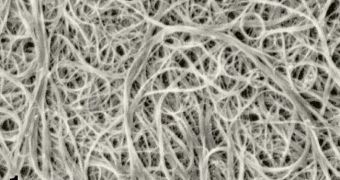Experts at the Rice University say that imperfect carbon nanotubes are the most likely to exhibit dips in brightness when viewed by external observers. Perfect CNT displays are the brightest, a trait that could be very useful in applications such as advanced sensors.
Length and imperfections were found to be the two most important factors affecting the brightness of carbon nanotubes in solutions. The new investigation deals exclusively with single-walled carbon nanotubes (SWCNT), which are only one-atom thick.
Details of the study were published in the latest issue of the esteemed American Chemical Society (ACS) journal ACS Nano. The research was led by Rice chemist Bruce Weisman, together with former graduate student Tonya Leeuw Cherukuri and postdoctoral fellow Dmitri Tsyboulski.
The team says that the work they had to do was carried out painstakingly slow, primarily due to the fact that Cherukuri had to analyze the characteristics of no less than 400 individual nanotubes. Each of these structures is thousands of times thinner than a human hair.
CNT have the ability to emit light at near-infrared wavelengths, a property called fluorescence. By analyzing this trait, the team was able to collect a wealth of data on each nanotube. This study basically validates this approach as a useful tool for studying SWCNT.
One of the most important conclusions was that the longest nanotubes appeared to be the brightest as well. Consistent fluorescence intensity was observed in CNT that were of the same length.
“There's a rather well-defined limit to how bright they appear. And that maximum brightness is proportional to length, which suggests those tubes are not affected by imperfections,” Weisman says.
At the same time, the team noticed that the brightness of similarly-long CNT varied depending on the chemical reactions that had affected the structure of the tubes, as well as on whether or not the structure itself was defective or damaged since the tube was created.
“We used spectroscopy to take this very polydisperse sample containing many different structures and study just one of them […] But even within that one type, there's a wide range of lengths,” the team leader adds.
The Welch Foundation, the US National Science Foundation and Applied NanoFluorescence sponsored the investigation, which was first reported on last year.

 14 DAY TRIAL //
14 DAY TRIAL // 